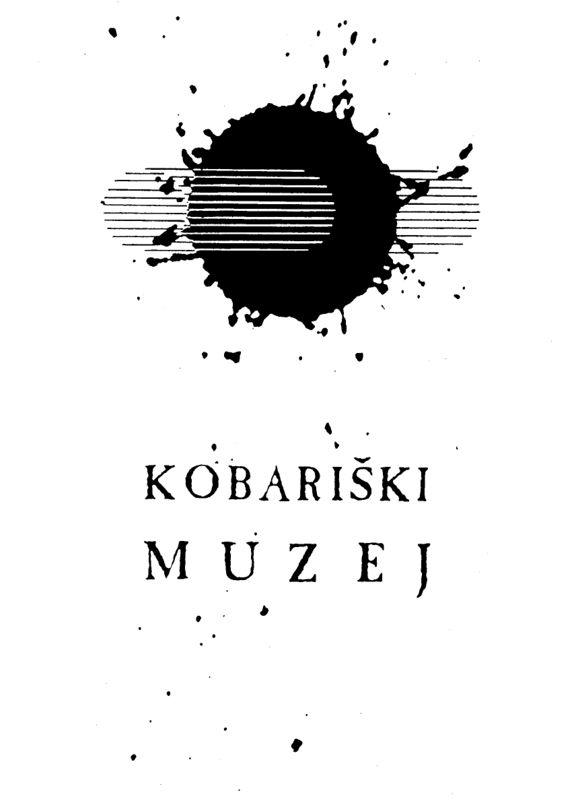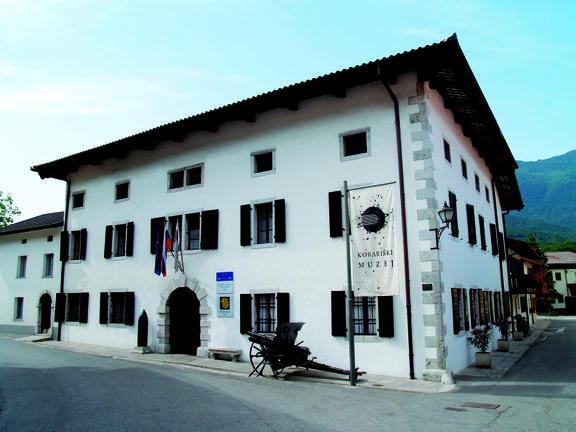URIs of the form "info@kobariski-muzej.si, kobariski.muzej@siol.net" are not allowed.
Difference between revisions of "Kobarid Museum"
Ivan Pirnat (talk | contribs) |
Ivan Pirnat (talk | contribs) |
||
| Line 49: | Line 49: | ||
For those wishing to visit historical battle field and with some trekking experience 5 mountain trails from 3 to 8 hours are available to visit with museum guide. Very demanding tour are 8 hours long tour to Mt. Krn and Mt. Batognica, 10 hours The ridge of Kal to Mt. Krnčica, 6 hours long Rommel's Route following the route of decisive breakthrough of German and Austro-Hungarian forces on 26th October 1917 near Tolmin as Erwin Rommel later known as Desert Fox has described in his book ''Infanterie greift an'' (Infantry is Attacking, 1937). | For those wishing to visit historical battle field and with some trekking experience 5 mountain trails from 3 to 8 hours are available to visit with museum guide. Very demanding tour are 8 hours long tour to Mt. Krn and Mt. Batognica, 10 hours The ridge of Kal to Mt. Krnčica, 6 hours long Rommel's Route following the route of decisive breakthrough of German and Austro-Hungarian forces on 26th October 1917 near Tolmin as Erwin Rommel later known as Desert Fox has described in his book ''Infanterie greift an'' (Infantry is Attacking, 1937). | ||
Forth tour 3 hours long is The Ridge of Kolovrat to Mt. Na Gradu, and fifth 4 hours long is Mount Mrzli Vrh. All along the Soča river many rich and interesting private museum collections on remains from First world War can be visited on prior notice. | Forth tour 3 hours long is The Ridge of Kolovrat to Mt. Na Gradu, and fifth 4 hours long is Mount Mrzli Vrh. All along the Soča river many rich and interesting private museum collections on remains from First world War can be visited on prior notice. | ||
| − | Next to Kobarid Museum there is Tourist Information centre with spacious exhibition space where occasional temporary art and history exhibitions are held. | + | Next to [[Kobarid Museum]] there is Tourist Information centre with spacious exhibition space where occasional temporary, art and history exhibitions are held. |
==Colaboration== | ==Colaboration== | ||
Revision as of 19:25, 20 March 2010
-
13 May 2024
"Around The Paths of Peace: In Search of Traces of War 1915-118" is an event about connections between trenches still visible in the territory between Switzerland and Adriatic Sea. The debate with historians from Austria and Hungary and a representative of Italy will include two Slovenian speakers, Maša Klavora from Walk of Peace in the Soča Region Foundation, and Martin Šolar from Kobarid Museum. Austrian historian Peter Schubert, PhD, will also be presenting two of his books. Organised in collaboration with Collegium Hungaricum, Kral Verlag, Walk of Peace in the Soča Region Foundation, Kobarid Museum, Verein Dolomitenfreunde – Friedenswege Österreich and Promo Turismo FVG Cervignano del Friuli.
-
7 Nov 2017
The Aspects of the Isonzo Battles 1915-17, a lecture by Jože Šerbec, Kobarid Museum, supported by the Consulate General of the Republic of Slovenia Munich,
-
to
14 Jun 2016
14 Jul 2016
World War I: Sons of Russia in the Slovenian Alps, an exhibition organised in cooperation with the Kobarid Museum and the Embassy of the Republic of Slovenia Moscow,
Exhibition
Accommodated in a renovated house in the town's main square which once housed an Italian military court, the museum displays an amazing collection of military equipment, photographs and personal belongings of soldiers fighting at the front.
The entrance foyer symbolically introduces visitors to the theme of the permanent exhibitions with maps that present Europe's World War I battlefields and the reshaped political borders at the end of the war, with flags, portraits of soldiers of many nationalities and gravestones from the military cemeteries in the Upper Soča Valley region. Because of its location at the junction of the Soča and Nadiža valleys that link Friuli and Carinthia, Kobarid was the scene of numerous invasions and wars, the most ferocious one being during the First World War.
The Krn Room presents the initial assaults along the Soča River after Italy's entry into the war in 1915. Italian alpine troops achieved the first major victory on the Soča Front with the capture of Mount Krn, when in June 1915 they wrested this 2,245 metre peak from the hands of its Hungarian defenders. The central exhibit of this room is the 1:1000 scale model of Mount Krn, Mount Batognica and neighbouring peaks. Many visitors study the model carefully before taking the tour of this highest part of the former battlefield, or alternatively upon their return from the unforgettable open-air museum.
The White Room tells of the suffering of the soldiers in the cruel environment of the karst mountains during winters with six and sometimes more metres of snow.
The Hinterland Room illustrates how the area behind the lines of the Soča Front became a genuine anthill of hundreds of thousands of soldiers and workers scattered from Mount Rombon to the shores of the Bay of Trieste.
The story of the 29 months of fighting for positions along the Soča River concludes in the Black Room, where photos, crucifixes and sculptures made by soldiers are on display.
The third floor depicts the final campaign of the Soča Front and the twelfth Soča battle, the counter-offensive by elite German and Austro-Hungarian units called the Battle of Kobarid. The scale of this task is illustrated on a 1:5000-scale relief model of the Upper Soča River region and large maps showing the movements and distribution of military units. The preparations for the battle and its course are documented with numerous photographs, taken largely in the second half of October 1917 and during the first days of the fighting, which present most comprehensively the events in the Bovec basin, including the German attack with gas shells on the troops of the Friuli Brigade, the breakthrough of the 12th Silesian Division from Tolmin toward Kobarid, and the movement of sublieutenant Erwin Rommel's unit across the slopes of the Kolovrat mountain range to the peaks of Mount Matajur. A very detailed description of these events is presented in the 22-minute multivision programme, which can be shown in four languages.
The museum upgraded its multimedia equipment in 2005, acquiring new archives and making a new documentary about the museum to mark the 90th anniversary of the beginning of this bloody World War I battleground.
Guiding tours
The Kobarid Historical Trail leads visitors to places in the surroundings of Kobarid where there are significant historical, cultural, and natural points of interest. It is five kilometres long and it takes 3 hours to see historical sites around historical town of Kobarid. Major stops along the trail besides the Kobarid Museum are: Roman settlement at Gradič, Italian ossuary, Tonocov grad, Italian defense line, Soča Canyon, Kozjak Falls, Italian defense line and Napoleon Bridge.
For those wishing to visit historical battle field and with some trekking experience 5 mountain trails from 3 to 8 hours are available to visit with museum guide. Very demanding tour are 8 hours long tour to Mt. Krn and Mt. Batognica, 10 hours The ridge of Kal to Mt. Krnčica, 6 hours long Rommel's Route following the route of decisive breakthrough of German and Austro-Hungarian forces on 26th October 1917 near Tolmin as Erwin Rommel later known as Desert Fox has described in his book Infanterie greift an (Infantry is Attacking, 1937). Forth tour 3 hours long is The Ridge of Kolovrat to Mt. Na Gradu, and fifth 4 hours long is Mount Mrzli Vrh. All along the Soča river many rich and interesting private museum collections on remains from First world War can be visited on prior notice. Next to Kobarid Museum there is Tourist Information centre with spacious exhibition space where occasional temporary, art and history exhibitions are held.
Colaboration
Kobarid Museum is a main Slovenian partner in international collaboration between Italian and Austrian organisations that are researching and promoting common history of First World war and Isonzo Front so the whole south west front line would become a European Park of Memory. In order to preserve this heritage the Slovenian Government adopted a ten-year programme in 2000, it established The Walks of Peace in the Soča Region Foundation as a head organisation for this national and international project. The objective of the project is to preserve, restore and present the historical and cultural heritage of the First World War in the area of the Isonzo Front for the study, tourist and educational purposes. Foundation was supported also by European Interreg IIIA program and Phare CBC Italia.
See also
- Goriška Museum
- Tolmin Museum
- Museum Collection of the Soča Front at Sveta Gora
- Birthplace of Simon Gregorčič, Vrsno
- Triglav National Park
- The Walks of Peace in the Soča Region Foundation
External links
- Kobarid Museum webpage
- Isonzo Front on Wikipedia
- Battles of Isonzo Front on The Walks of Peace in the Soča Region Foundation website
- The walks of peace in The Soča Region Foundation website
- Kobarid Museum on Kraji.eu website
- Vr panoramas of Kobarid Historical Walk on Burger.si website
- Town of Kobarid with historical sites on Kraji.eu website
- Soška Fronta Society in Slovene
- Pro Hereditate webpage where many private museum collections on Isonzo Front can be found
- Fortress Kluže
- Multimedia exhibition of Domestic Research Society on Animals 1914-1918 in TIC Kobarid, 2005 in Slovene




